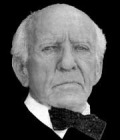
Libra
(24 September to 23 October)
Librans love partner-dancing as it fits in nicely with their ideals of harmony and balance.
Any movement to music that involves creating a harmonious picture with a partner will appeal to the Libran.
Colgadas were invented by a Libra while pursuing the ultimate state of equilibrium.
Still, Librans don't seem to be able to make a decision on their own, like whether they prefer neo or traditional.
They will take the opposing view out of habit. On the other hand Librans are able to explain the difference between Golpecitos and Zapatazos,
which is interesting as the rest of us know that there is no difference at all.

Carlos Estévez
famous Libra
in Argentine tango
Carlos Alberto Estévez was born in Buenos Aires on 29 September 1912 (presumably, sources are inconsistent about his date of birth).
The young Estévez began dancing around 1927. At that time, he already acquired his nickname 'Petróleo' ('petroleum' in English).
This was a reference to the fact that he liked to drink red wine in abundance.
The following year, Carlos met 'El Negro Navarro', an experienced dancer of the 1890s, who entrusted him with the secrets of the primitive tango.
Carlos became determined to become the best dancer.
He spent his nights at the Nelson Club with his friend Salvador Sciana, practicing as well as modifying and creating figures to adjust to the new tango rhythm.
The early tango music was written in 2x4 notation. This was changed to 4x4 during the 1920s.
By the end of that decade the tango had become slower, calm and more melancholic.
But many people were still dancing the same choreography that had developed to adjust to the 2x4 notation.
Carlos Estévez changed the way tango was danced within one decade and became known as the great 'Renovator of the 1940s'.
Under his influence the posture became more erect and more elegant. He invented 'el contrafrente' and giros with sacadas, and combined them with boleos.
Carlos also is said to have modified ganchos and arrastres, and that he introduced the utilization of picados.
Tango changed for the better. New figures became available allowing a more harmonious interpretation of the music by the dancers while staying in tune with the musical tempo.
Carlos his sole motivation was the pleasure of dancing and creating. He didn't look for fame and he didn't sell his talent.
To Carlos tango was a passion, not a profession. He worked as a bank clerk for 36 years. Estévez danced until the beginning of the 1990s.
Until the end, he never stopped mentally making up figures. Unfortunately his tired legs could no longer execute them. Carlos Estévez died at age 83 in May 1995.

